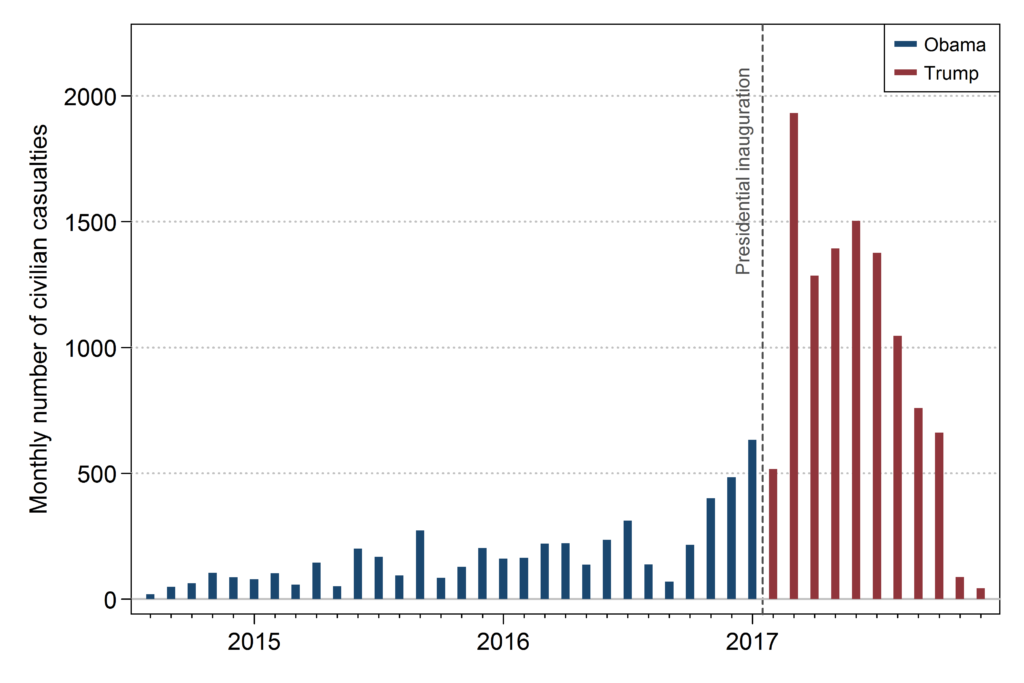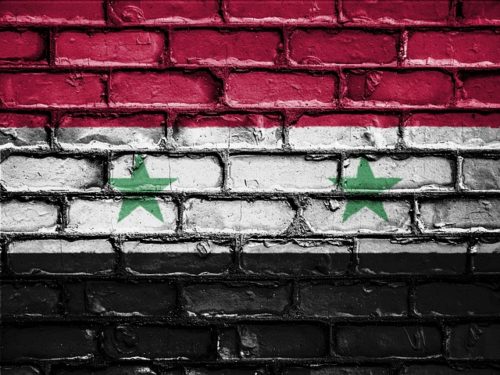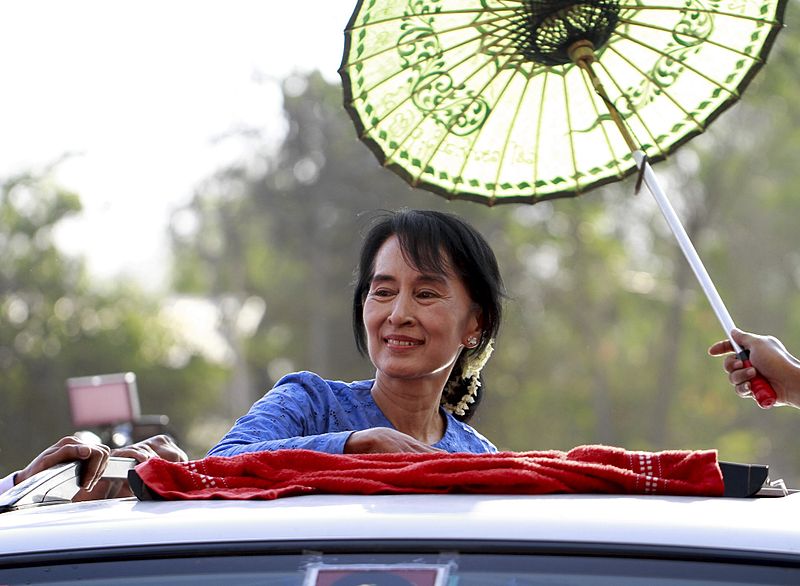By Adam Scharpf
The Islamic State (IS) has lost most of its territory in Syria and Iraq. Some praise high-powered US military operations for the insurgents’ decline. However, a recent news report suggests that civilians paid a high price in the US-led bombing campaign. Data seems to corroborate this claim. Figure 1 shows that after President Trump entered office, civilian deaths skyrocketed. This is problematic because civilian deaths strengthen terror groups. What accounts for the steep increase in civilian casualties? And how can we prevent such deadly operations in the future?
Figure 1. Civilian casualties caused by US-led coalition airstrikes in Iraq and Syria.

Explaining civilian casualties
There are three explanations that may account for the rise in civilian deaths. Each suggests a different process.
The battlefield
Some have invoked that the rising victim number has nothing to do with the change in US government but results from battlefield dynamics. With fighting taking place in densely populated areas, bombs are more likely to hit civilians. This account explains the increase in civilian deaths in the last months of the Obama administration when the offensives in Raqqa and Mosul took place. However, most experts agree that this is not the whole story behind the recent increase in victims.
The generals
Civilian casualties may also result from the decisions of generals. Reports (e.g., here, here, and here) indicate that the Trump administration adopted a hands-off approach in military matters. Trump himself stated that his generals now have total authorization in the fight against the IS.
Commentators seem to agree that Trump’s push of authority down the chain of command marks a significant change in the conduct of US military operations. Under President Obama, the White House kept the military on a short leash. Reports indicate that President Trump abandoned Obama’s approach of micromanaging military affairs.
Studies (e.g., here, here, and here) and my own research show that large autonomy for commanders can create problems. In wars against mobile insurgents like the IS, even professional military officers sometimes undertake operations that put civilian lives at danger. Officers are likely to prioritize military targets over civilian protection in the hope that this will get them cheap and quick tactical victories.
The president
A third way to look at the empirical pattern is to study President Trump in his role as the Commander in Chief. During the election campaign, Trump repeatedly formulated the goal of destroying the IS and, if necessary, hit hard the civilians close to the insurgents. As the Commander in Chief, President Trump may direct military operations to a larger degree than reports suggest.
The President has been vague on how much decision-making power he actually conceded to generals. When journalists indicated that the administration was thinking about making it easier for the military to conduct raids and drone strikes, Secretary of Defense James Mattis was quick to deny any watering down in operational rules. The US President is likely to play a central role in the process that led to the civilian deaths.
Even if we believe that the casualties in Iraq and Syria result from the generals’ autonomy, the President’s hands-off approach is a necessary condition to create the toxic environment for civilians. Trump’s decision to grant the military large authority may be exactly this: A political strategy to take credits if things work out and to shirk responsibility if they don’t. In this, President Trump plays a key role in containing future civilian casualties.
Containing civilian casualties
Comprehensive political control is central for keeping commanders in check. However, close oversight, and the punishment of military transgressions hinge on the US government’s willingness to hold officers accountable. Currently, neither the Trump administration nor Congress seems willing to do so.
With its hands-off approach, the Trump administration is not different from other democratic governments. Leaders oftentimes avoid punishing military wrong-doing to not loose support. Trump’s supporters are likely to see the sanctioning of generals as a failure to deliver on his promise of using an iron fist against America’s enemies.
Yet, by pushing authority down the chain of command, the Trump administration is currently evading political responsibility. Public scrutiny is therefore essential to push the US government for tight military control. Naming and shaming as well as international investigations can foster political accountability. They may motivate the US government and the military to minimize civilian casualties in future campaigns.
Adam Scharpf is a post-doctoral researcher at the University of Mannheim. His research focuses on state repression, civil-military relations, and coercive bureaucracies.









2 comments
Jesus. Devastating. But I’d be surprised if our generals necessarily want to get more careless about harming civilians. Surely they understand the impacts (in terms of counterinsurgency ops, winning hearts & minds etc.)? So I guess I lean toward your third explanation, the president.
Little follow-up: The Guardian reports this morning that Somalia seems to experience the same “Trump turn” in military operations
https://www.theguardian.com/world/2018/jan/23/somali-citizens-count-cost-of-surge-in-us-airstrikes-under-trump